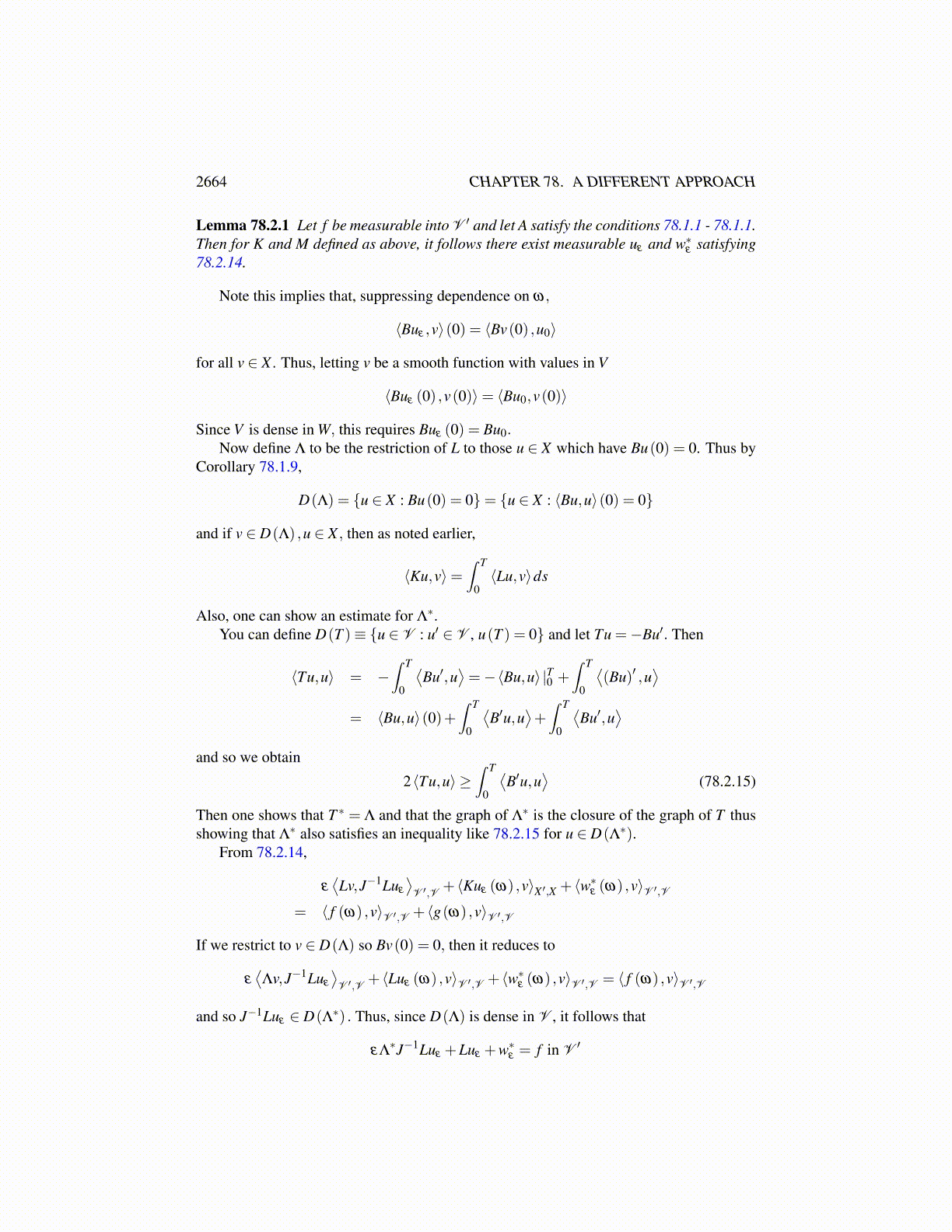
2664 CHAPTER 78. A DIFFERENT APPROACH
then,lim inf
n→∞⟨zn +wn,un− v⟩ ≥ ⟨z(v)+w(v) ,u− v⟩ ,
for z(v) ∈ A(u) ,w(v) ∈ B(u) and in fact, z ∈ A(u) and w ∈ B(u).
We now state our result on measurable solutions to general elliptic variational inequal-ities that may contain sums of set-valued, bounded and pseudomonotone operators. Thenthe following is proved in [2]. See Theorem 48.5.3 on Page 1568.
Theorem 78.1.12 Let ω → K (ω) be a measurable set-valued function, where K (ω)⊂Vis convex, closed and bounded. Let the operators A(·, ·) and B(·, ·) satisfy assumptionsH1−H3. Finally, let ω → f (ω) be measurable with values in V ′.
Then, there exists a measurable function ω → u(ω) ∈ K (ω) such that ω → wA (ω),and ω → wB (ω) with wA (ω) ∈ A(u(ω) ,ω) and wB (ω) ∈ B(u(ω) ,ω), and⟨
f (ω)−(wA (ω)+wB (ω)
),z−u(ω)
⟩≤ 0,
for all z ∈ K (ω).If it is only known that K (ω) is closed and convex, the same conclusion holds true if it
is also known that for some z(ω) ∈ K (ω), A(·,ω)+B(·,ω) is coercive, that is
lim∥v∥→∞
inf{⟨z∗,v− z⟩∥v∥
: z∗ ∈ (A(v,ω)+B(v,ω))
}= ∞.
Instead of two operators, one could have the sum of finitely many with the same conclu-sions.
78.2 Measurable Solutions To Evolution InclusionsThe main result in this section is Theorem 78.2.2 below. It gives an existence theorem formany evolution inclusions. We are assuming that A(·,ω) : V →P (V ′) satisfies someconditions presented earlier: These are 78.1.1-78.1.1. Then we can regard A(·,ω) as a setvalued pseudomonotone map from X to P (X ′). It is clear that A(u,ω) is a closed convexset in X ′ because if z∗n→ z∗ in X ′,z∗n ∈ A(u,ω) , then z∗ ∈ A(u,ω) because a subsequence,still denoted as z∗n converges weakly to some w∗ ∈ A(u,ω) in V ′. Since X is dense in V ,this requires w∗ = z∗. The necessary limit conditions for pseudomonotone are nothingmore than the assumed conditions in 78.1.1. Also, we will assume in this section thatp≥ 2. This restriction is necessary because of the desire to consider time dependent B andthe assumption 78.1.6 which involves a term
∫ T0 ⟨B′u,u⟩ which might not make sense if
p were only larger than 1. If B were not time dependent, this assumption would not benecessary and the argument given here would continue to be valid. We essentially showthis is the case in the following section in which we also consider a more general coercivitycondition than 78.1.1, but one can see that there is no change in the argument and it is infact simpler if we assume B is constant.
As above, 5, K : X → X ′ can be defined as
⟨Ku,v⟩ ≡∫ T
0⟨Lu,v⟩ds+ ⟨Bu,v⟩(0)